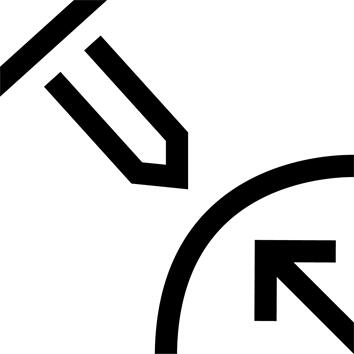Inflating tip
Unlike a car, a bicycle tire needs to be inflated regularly.
We recommend that you maintain tire pressure between 5 and 7 bars.
An under-inflated tire greatly reduces the bike's performance, and therefore your effort, and increases the risk of punctures.
At 5 bars, your bike will be more comfortable and less efficient; at 7 bars, the opposite is true.
What to do in the event of a puncture
In the event of a puncture, it is very common for the debris that caused the puncture (shards of glass, thorns, etc.) to become lodged in the rubber and remain there.
In this case, you will have repeated punctures, even if you change the inner tube.
We recommend that you carefully inspect the outside and inside of the tire before changing the tube and reassembling it on the rim.
When reassembling, pay attention to the rolling direction (forward arrow).
Restrictions on use
Not suitable for snow and ice.
Test
Our tires are tested in a specialized independent laboratory.
We test abrasion and puncture resistance in comparison with market benchmarks.
How to measure tire wear?
To measure the wear of your road tires and know when they need changing, you need to look at the condition of the tread. Signs of wear can be :
- beginning to see the tread fraying,
- a series of micro-cracks,
- the tread tending to flatten,
- the carcass appearing.
These are all cases where the tire is worn and should be replaced.
How do I dismount a tire?
To remove the tire, deflate the tube until no more air comes out.
You can then remove the tire from the rim using a tire lever.
How do I remount a tire?
To remount a tire, place one side of the tire in the bottom of the rim. Once you've done this, pre-inflate your tube to around 30% before installing it in the tire (pre-inflation reduces the risk of the tube pinching).
Next, install the second side of the tire in the rim, starting opposite the valve.
Before fully inflating your tire, check that the tube is not trapped between the tire and the rim.
Pro tip
When inflating your tire, make sure you set the right pressure for the terrain you're riding on and, above all, for the weather.
If you're riding in wet weather, don't hesitate to lower the tire pressure to increase grip.
Conversely, if you're riding in dry weather, you can increase the pressure.




